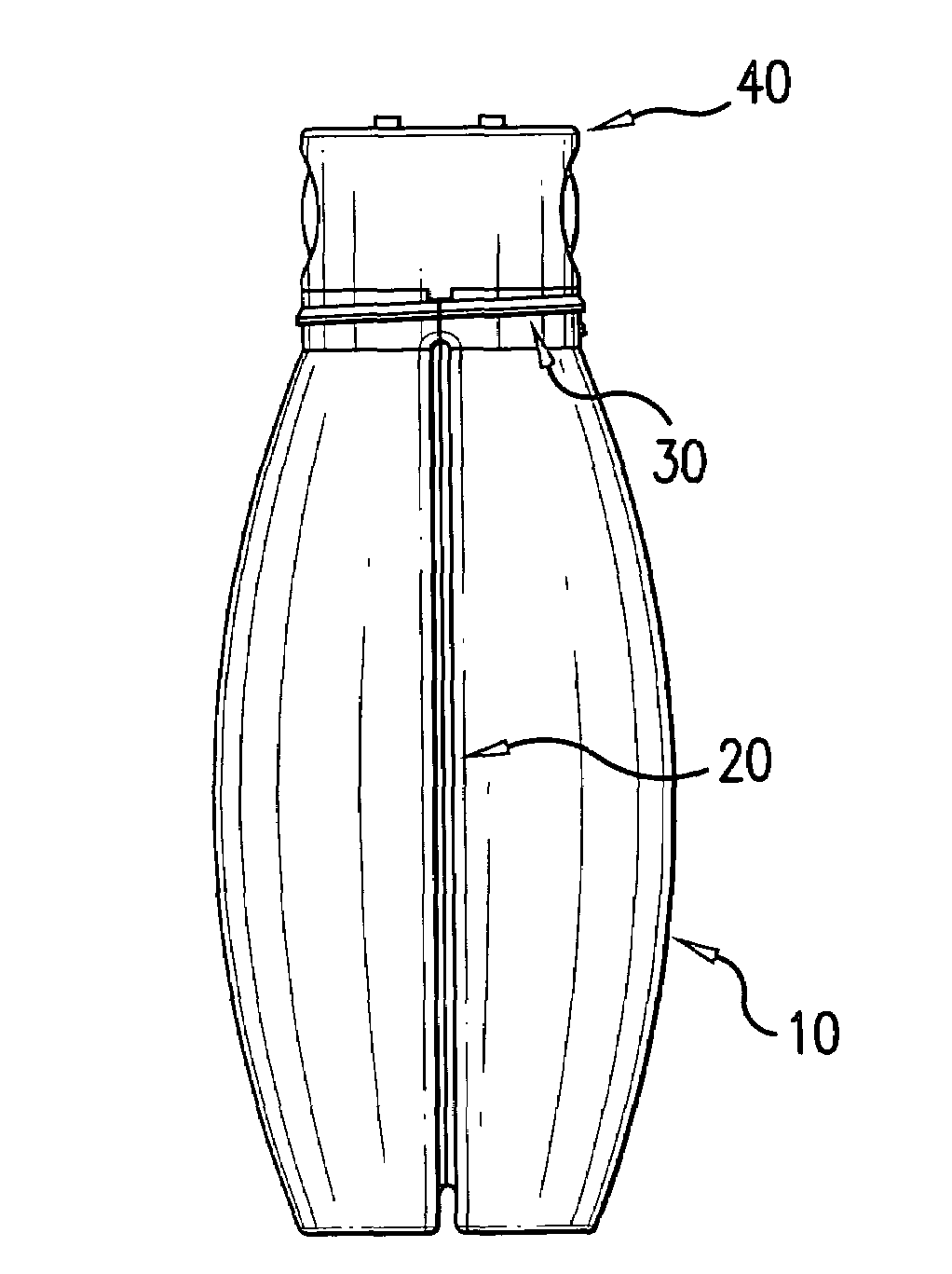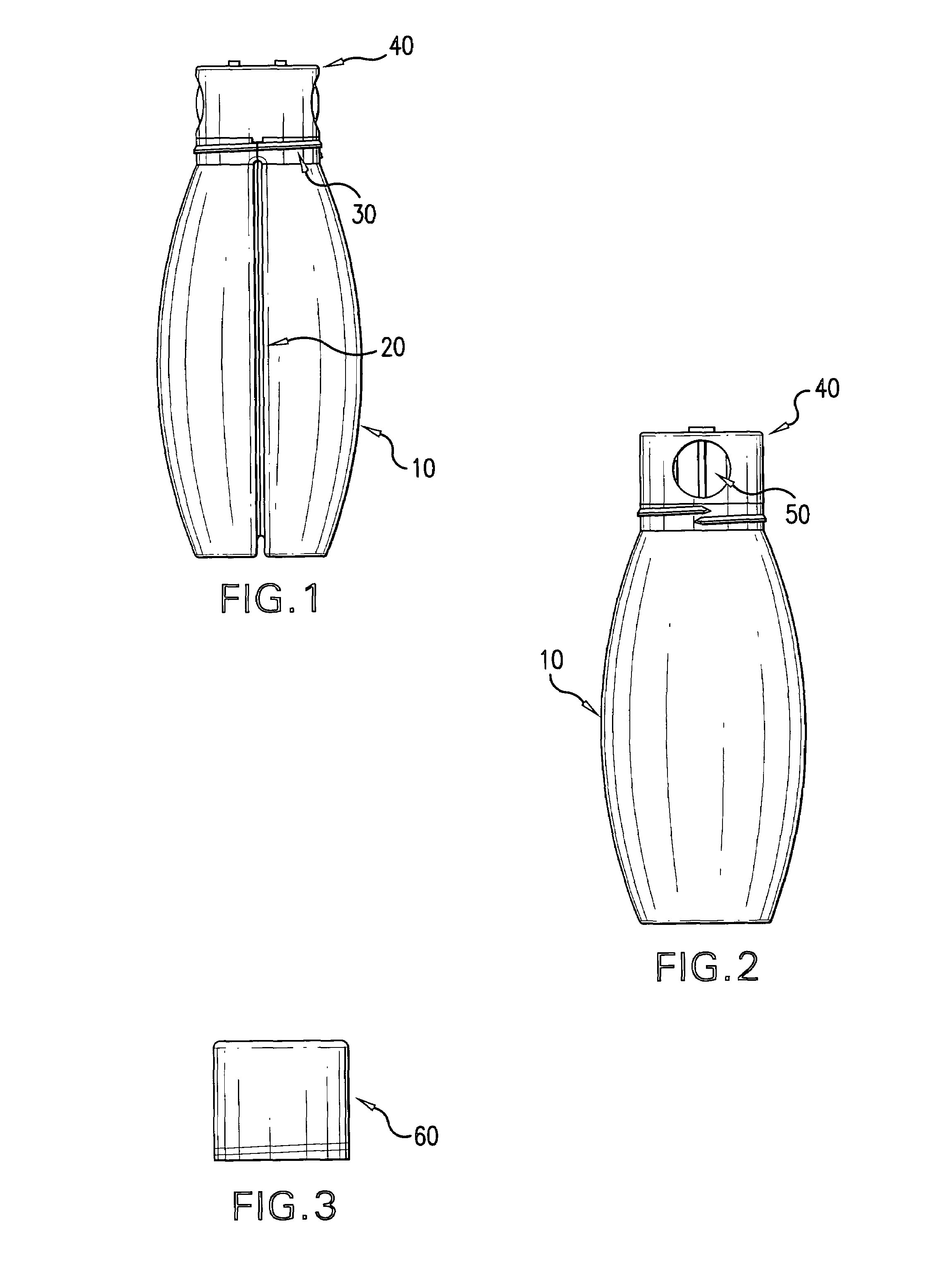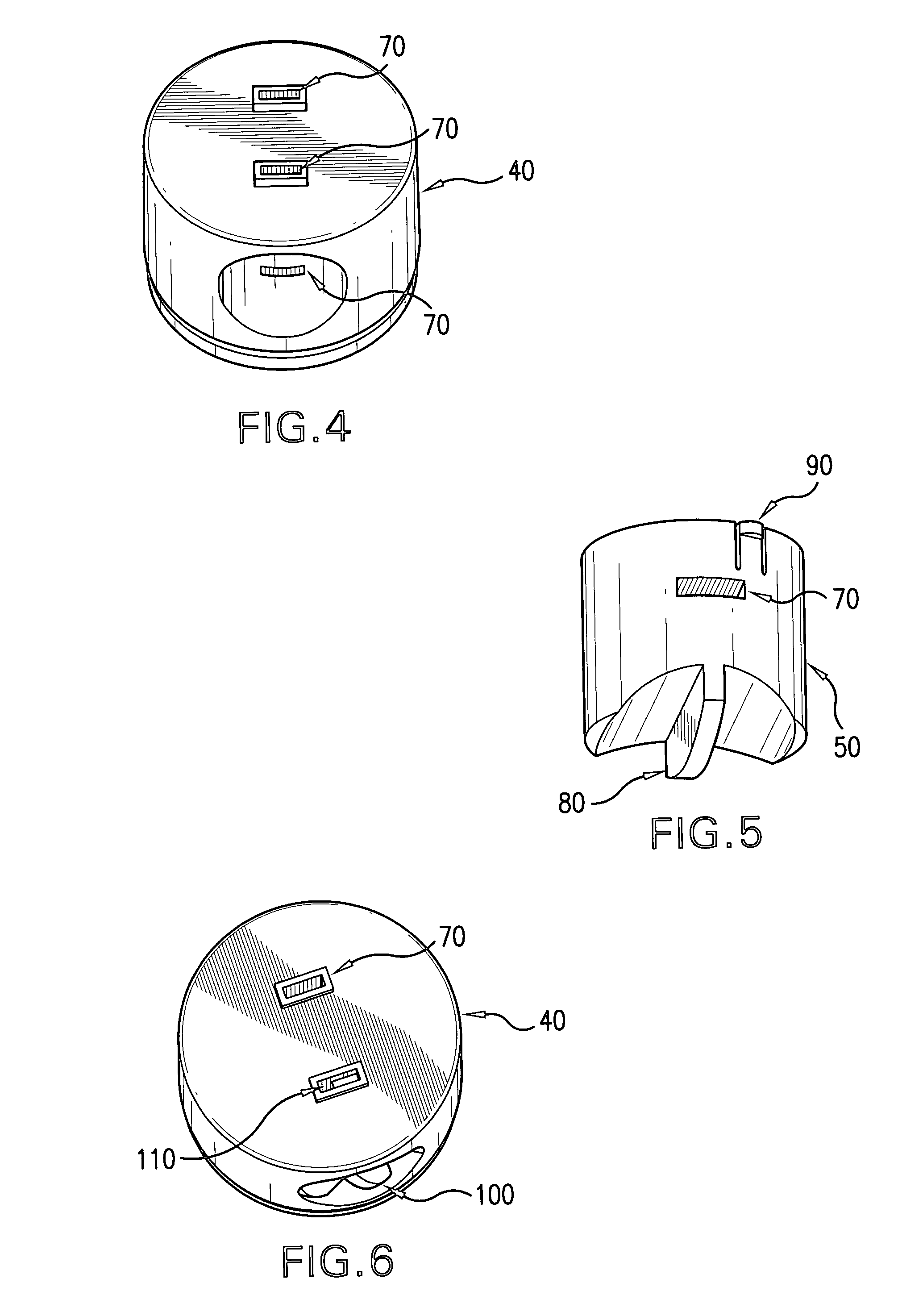Double chamber variable condiment dispenser bottle
a condiment dispenser and variable technology, applied in the field of condiment dispensers, can solve the problems of large number of separate condiment containers becoming unwieldy and time-consuming to use, cap dropping, contaminated or completely lost, time-consuming to determine which cap, etc., to achieve convenient stacking of bottles, reduce leakage, and facilitate the effect of convenient us
- Summary
- Abstract
- Description
- Claims
- Application Information
AI Technical Summary
Benefits of technology
Problems solved by technology
Method used
Image
Examples
Embodiment Construction
[0024]The current invention is a dual chambered condiment bottle 10 represented in FIG. 1. FIG. 2 is a ninety degree rotation about the vertical axis of the condiment bottle 10. As seen in FIG. 1, the condiment bottle 10 is divided into two sections by chamber divider 20. Condiment bottle 10 can be molded from polyethylene or polypropylene, but not limited to those materials alone. Any plastic or other material can be used provided that the material used has the property of being able to return to its original shape after being squeezed to force ejection of the desired amount of condiment(s). A threaded portion 30 is molded at the top of the condiment bottle 10 to engage the corresponding threaded portion molded in transparent cap 60 represented in FIG. 3. The threaded portion 30 is molded on the outside surface at the top of the condiment bottle 10. Likewise, the corresponding threaded portion molded in transparent cap 60 is on the inside surface of the cap 60. The threaded portion...
PUM
 Login to View More
Login to View More Abstract
Description
Claims
Application Information
 Login to View More
Login to View More - R&D
- Intellectual Property
- Life Sciences
- Materials
- Tech Scout
- Unparalleled Data Quality
- Higher Quality Content
- 60% Fewer Hallucinations
Browse by: Latest US Patents, China's latest patents, Technical Efficacy Thesaurus, Application Domain, Technology Topic, Popular Technical Reports.
© 2025 PatSnap. All rights reserved.Legal|Privacy policy|Modern Slavery Act Transparency Statement|Sitemap|About US| Contact US: help@patsnap.com



